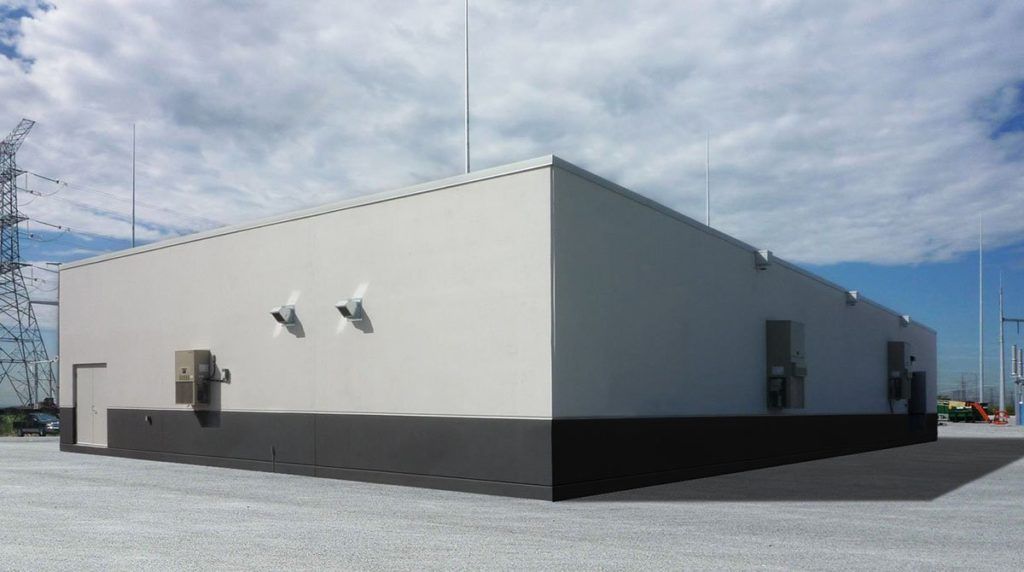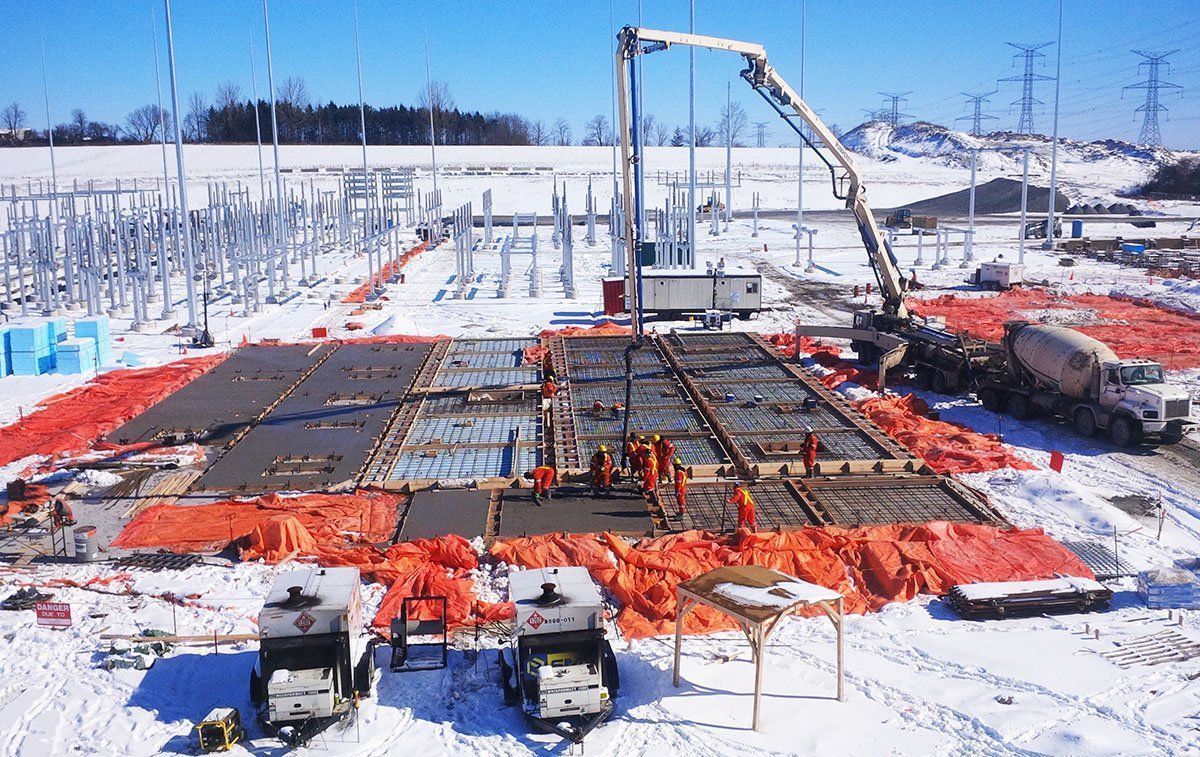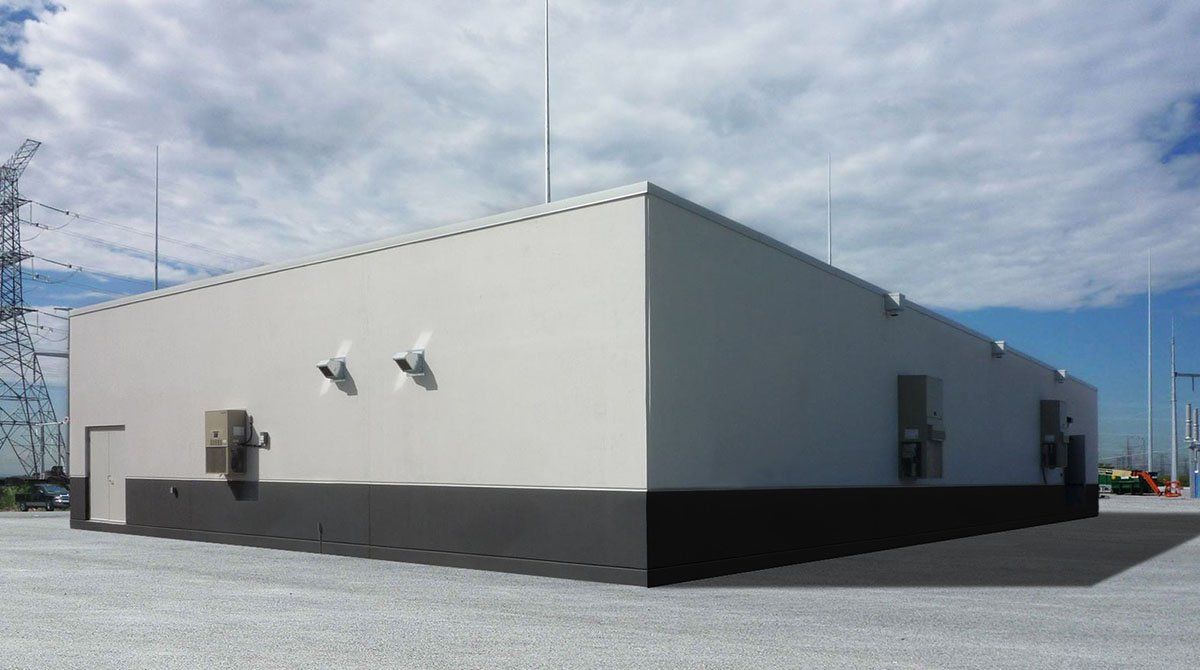Hydro One’s First Tilt-Up Built Transformer Station; The Future for Unoccupied Structures?

As the Greater Toronto Area (GTA) continues to grow, so does its need for electricity. To meet current and future demand, Hydro One recently built a new transformer station in the Municipality of Clarington.
Completed in the spring of 2017, Clarington Transformer Station will ensure the eastern GTA continues to enjoy an adequate, reliable and safe supply of power for years to come. It is the first Hydro One project to use tilt-up construction.
Tilt-Up as the economical construction choice for Relay Buildings A & B
Barry Bryan and Associates (BBA) was retained as the architect and structural engineer for this design-build project. Having previously worked with Tiltwall Ontario on more than a dozen projects ranging from educational to industrial buildings, BBA understood that the tilt-up method offered an economical alternative to a precast building, as well as other benefits.
On BBA’s recommendation, Clarington Transfer Station Relay Buildings A & B were built using tilt-up construction.

Tilt-up construction for unoccupied buildings
“Hydro One was looking for cost-savings, as well as a fireproof building with a clean and smooth interior finish,” says Tiltwall Ontario’s Len Overbeek. “Tilt-up construction was able to offer them everything they needed.”
In addition to providing a highly-robust structure, tilt-up construction facilitated the elimination of interior structural columns, beams, and double T-sections, resulting in increased floor space and a better layout.
Full height panels from foundation to roof also allowed for below grade raised access floor raceways to be waterproofed without cold joints, while fully-protected and continuous insulation ensure both relay buildings will remain energy efficient and require minimal maintenance for years to come.

Meeting the challenges of winter construction
Tiltwall Ontario poured and lifted 66 concrete panels to construct the two 5,759-square-foot Relay Buildings at Clarington Transfer Station. And although the Canadian winter can be a challenge on any construction site, Tiltwall Ontario didn’t let the snowy weather slow them down.
“We used a heated casting slab and insulated blankets to cure the panels,” says Overbeek, a process that allowed Tiltwall Ontario to ensure each concrete panel was cured at the ideal temperature.

The future of non-occupied structures
Clarington Transfer Station Relay Buildings A & B may be the first Hydro One project to use tilt-up construction, but Overbeek says interest in the building method is growing throughout the province.
“Tilt-up buildings are energy efficient, low maintenance and durable,” he says. “It’s an ideal construction choice for unoccupied structures.”


